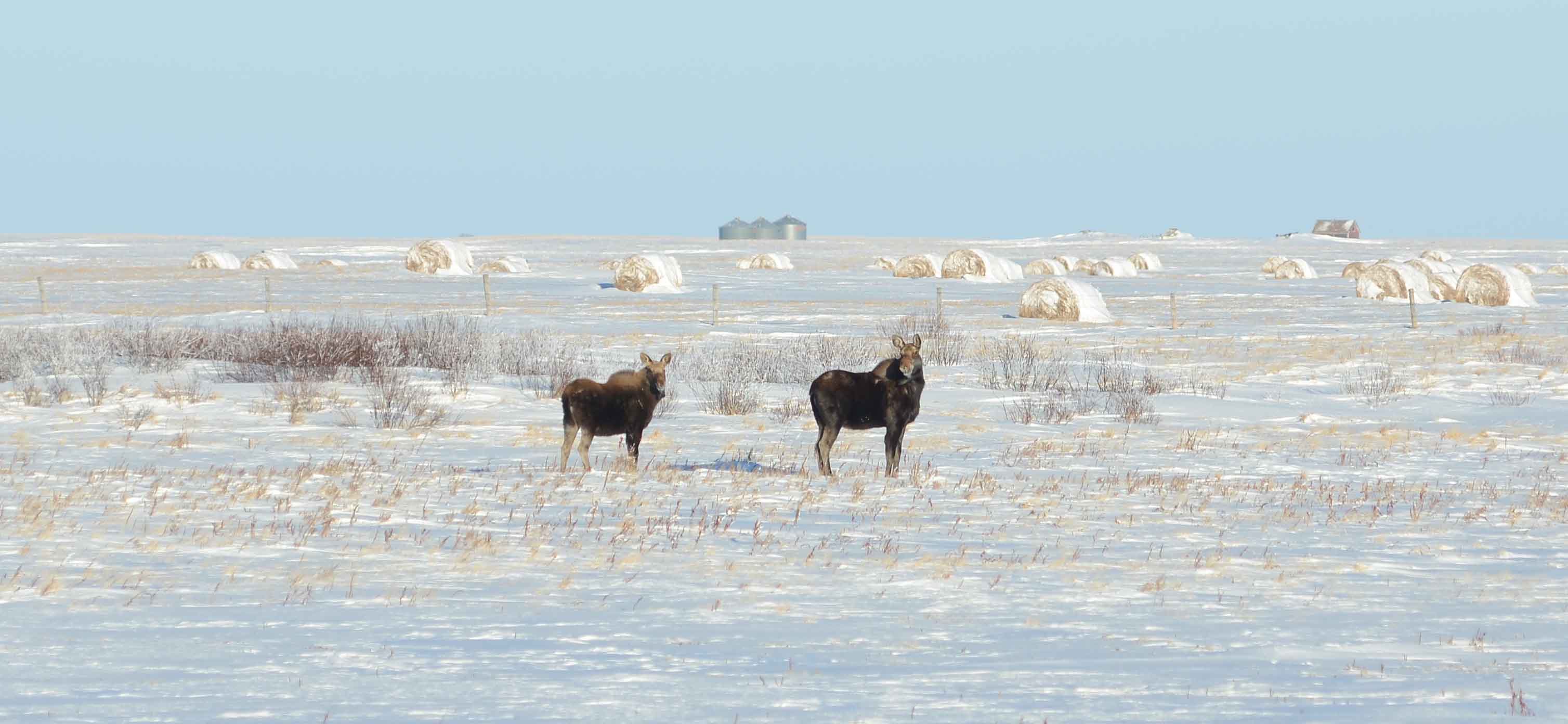Of moose and men: U of S research examines rural habitat
The University of Saskatchewan, with the support of the Saskatchewan Ministry of Environment and the Saskatchewan Wildlife Federation, is initiating a new research program on moose in rural Saskatchewan.
By Kris Foster The project aims to determine key habitats for farmland moose and their diet, understand their movements, and examine when and where they cross roads and highways.
The project aims to determine key habitats for farmland moose and their diet, understand their movements, and examine when and where they cross roads and highways.
"The study will follow the hourly movements of 50 moose using satellite-based collars over a four-year period," said Ryan Brook, assistant professor in the College of Agriculture and Bioresources and moose project director.
Moose have been gradually expanding their range southward within the province over the past 30 years.
Moose capture will be done in February 2013 and 2014 by a professional helicopter wildlife capture crew using a net-gun that shoots a net over the animal, a proven safe method that works well for capturing large animals.
Capture procedures will follow a detailed protocol developed in consultation with the Saskatchewan government and the University of Saskatchewan, and will follow the guidelines of the Canadian Council on Animal Care aimed at minimizing risk to moose.
When a moose is netted, the capture team will attach a satellite collar around the neck of the moose. They will also collect blood, hair and stool samples to assess animal health. No drugs will be used on the animals, enabling a quick and safe release.
The collars contain a release mechanism that causes the collars to fall off after two years and are then retrieved and reused.
The research will occur south of Saskatoon, extending from Dundurn, Outlook, Tuxford, Watrous and Chamberlain areas.
"It is our intention to keep disturbance and noise levels to a minimum during the capture and to leave the property we have landed on as soon as possible. Each capture will take about 30 minutes at most," said Brook.
This study will also examine issues related to property damage caused by moose.

